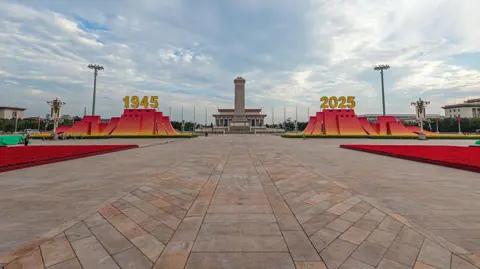The stage is set in the heart of Beijing for a grand display of power and military might choreographed by President Xi Jinping. Eight huge Chinese flags flutter at Tiananmen Square, flanking Mao Zedong's portrait, ahead of an anticipated parade with 26 foreign heads of state invited.
This event not only commemorates 80 years since Japan's surrender in World War II but also serves as a platform for Xi to showcase China's military advancements and emerging geopolitical influence. Over 20 world leaders are expected to attend, marking a significant moment in international relations.
The preparations have included heightened security measures, reflecting a climate of caution amid domestic discontent associated with economic struggles facing the youth and broader society. Reports indicate the Chinese state has heavily invested time and resources into promoting a narrative that celebrates its history, though it often downplays contributions from non-Communist forces during WWII.
Additionally, the concerns about public dissent have led to sweeping security measures in a city marked by oppression and control. Initiatives to block potential protests include removing shared bikes from the parade route and monitoring absent journalists. The people of Beijing are experiencing disrupted daily lives as they navigate a city transformed by a spectacle of national pride.
In conclusion, the parade represents a dual narrative of celebrating military strength while managing the delicate balance between authoritarian control and public sentiment within an increasingly complex geopolitical landscape.
















